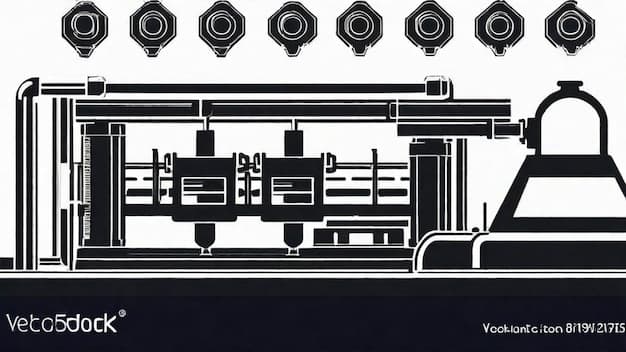In an era marked by technological advancements, the introduction of joystick-controlled automation systems is heralding a new age in various industries. This innovation not only enhances operational efficiency but also transforms the landscape of mechanization and production. Understanding the nuances and implications of these sophisticated devices reveals much about their potential to revolutionize sectors ranging from manufacturing to logistics. This article delves into the intricacies of joystick-controlled automation systems, examining their functionalities, benefits, challenges, and future prospects.
At the heart of any technological revolution lies the need for precision and control. Joystick-controlled automation systems epitomize this ethos. These systems utilize a user-friendly interface, primarily a joystick, to dictate machine movements with unparalleled accuracy. This control mechanism is reminiscent of the pilots in aviation, where fine-tuning maneuvers is crucial. By translating human inputs into actionable data via sophisticated algorithms, these systems offer a seamless interaction between human operators and automated machinery.
The operational mechanics of joystick-controlled systems revolve around two fundamental principles: real-time feedback and adaptive control. Real-time feedback ensures that operators receive instantaneous responses to their commands, fostering an environment of rapid decision-making. Adaptive control, on the other hand, allows the systems to learn and adjust to new variables, optimizing performance over time. Such functionalities enable industries to reduce waste, increase productivity, and ultimately lower operational costs. These systems find their applications in diverse areas, including manufacturing assembly lines, logistics warehouses, and even agricultural settings.
The manufacturing sector exemplifies the profound impact of joystick-controlled automation systems. For instance, in automotive assembly lines, these controls allow for precise manipulation of robotic arms. Workers can adjust positions and functions dynamically, significantly enhancing assembly speed while maintaining high quality. A critical feature of this system is its ability to integrate with existing machinery. This interoperability means that companies can upgrade their automation processes without the need for complete system overhauls, preserving initial investments and expediting the implementation process.
The logistics industry is experiencing a similar transformation. As e-commerce continues to burgeon, efficient warehouse management is of utmost importance. Joystick-controlled automated forklifts and pallet jacks are entering the fray, streamlining inventory management and order fulfillment processes. Operators can maneuver these vehicles in tight spaces with remarkable dexterity, enhancing safety and efficacy. Moreover, by reducing the physical strain associated with traditional manual handling, businesses create a healthier workplace environment while improving employee satisfaction.
Beyond conventional sectors, agriculture is not to be overlooked. With the increasing demand for sustainable practices, joystick-controlled automation systems are making their mark on smart farming. Tractors and drones equipped with joystick controls enable farmers to execute precise planting, fertilization, and harvesting processes. This precision not only maximizes yield but also minimizes waste—two key factors as the agricultural community faces the daunting challenge of feeding a growing global population.
While the advantages of joystick-controlled automation systems are evident, the integration of such technologies is not without its challenges. One significant concern is the training requisite for operators. To fully harness the capabilities of these systems, personnel must undergo comprehensive training programs. This investment in human capital is essential, as the efficacy of the system is heavily reliant on the operator's ability to interact seamlessly with the technology. Consequently, companies must balance the upfront costs of training and implementation with the long-term benefits of increased productivity.
Furthermore, as with any technological integration, there are initial costs associated with implementing joystick-controlled automation systems. While the return on investment (ROI) may manifest over time, organizations must carefully assess their financial readiness to embrace this shift. It is pivotal to devise a cost-benefit analysis that contemplates potential growth metrics alongside the economic implications of upgrading machinery and training staff.
The future landscape of joystick-controlled automation systems is promising. As artificial intelligence (AI) continues to evolve, these systems are poised to become even more intuitive and efficient. The advancements in machine learning could lead to machines that not only respond to joystick inputs but anticipate the operator's needs based on historical data. Such predictive capabilities would revolutionize the way operators interact with machines, further enhancing productivity and safety.
Another emerging trend is the convergence of joystick-controlled systems with augmented reality (AR) technology. By merging these features, operators could visualize real-time data alongside their control settings, enabling enhanced decision-making processes. This integration would serve to bolster operational efficiency and facilitate training, as new employees could familiarize themselves with machinery through immersive AR experiences.
In conclusion, joystick-controlled automation systems mark a significant leap in industrial mechanics, providing unparalleled control and efficiency across various sectors. While challenges exist, the long-term benefits—ranging from increased productivity to enhanced worker safety—are compelling. As industries continue to embrace these innovative technologies, the future holds vast potential for further advancements that may redefine mechanization. The trajectory of this revolution is not merely a chapter in industrial history; it is a testament to human ingenuity and the relentless pursuit of progress.





















Responses (0 )